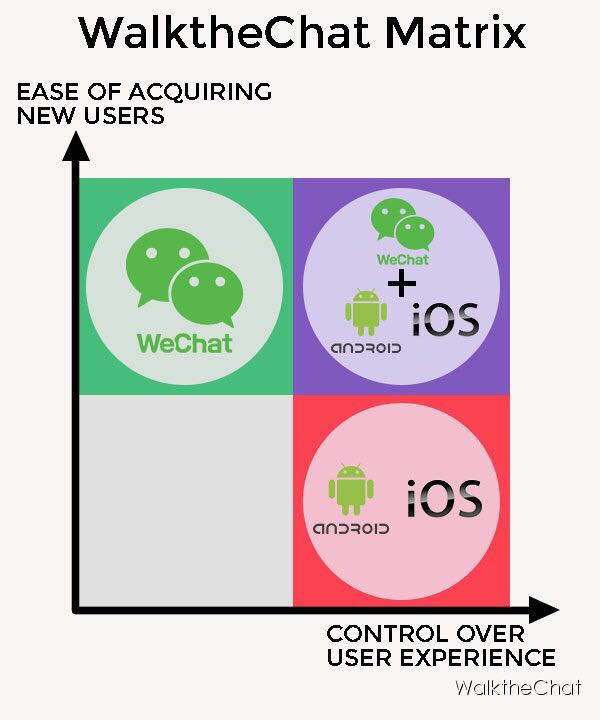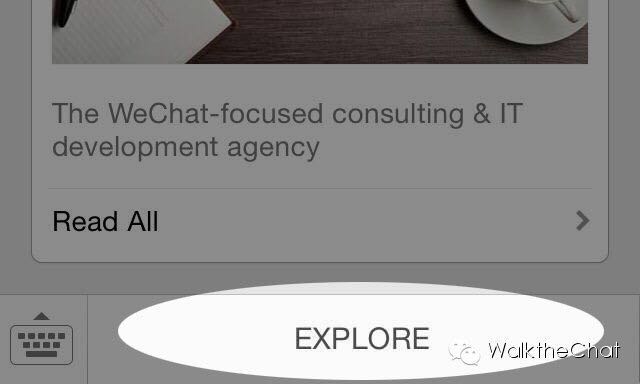Your company is going digital. Even better: your company is going mobile. You know that more than half of China’s Internet users are accessing the web via smart-phones, growing at an insane rate, and you want to seize this opportunity.
In order to tackle this challenge, you have two ways moving forward:
- Creating native (Android or iOS) APPs which users will be able to download and access via their mobile
- Creating a WeChat web-APP accessed through your WeChat service account
How to best combine these two tools and maximize your return on investment? Let’s have a look.
What is a WeChat web-APP?
WeChat is not Weibo. It is more than a social media.
When your users are on your WeChat service account, they can click on menus at the bottom of the screen and be linked to a WeChat website.
This website is stored outside WeChat servers, which means you can display any kind of static or interactive content on it: graphs, images, forms, forums, etc…
Most importantly, you can use modern web technologies (HTML5, AngularJS…) in order to make this website look exactly like an APP. Going further, you can use the latest local storage technologies so that users will be able to download this WeChat web-APP on their phone and access it without Internet. Just like an iPhone or Android APP.
But what are the limitations of WeChat web-APPs?
WeChat web-APP’s have several limitations over native APP’s (in many ways, these limitations are similar to the ones of WeChat connected devices that we outlined in a previous article):
- The first page users see will always be the service account page which you can’t really customize: limitations in terms of design
- You can’t stick the public account at the top of the list for easy access
- Main limitation: the amount of messages you can push. Each user can only receive 4 messages per month, and you can send only 100 messages in total (so you can segment users in 25 different groups)
- Users are not your users. They are Tencent’s users. So you can at any point be victim of changes in WeChat policy / functions / layout etc…
What are the benefits of WeChat web-APPs?
WeChat web-APP’s have three main benefits:
- Easier to add: it takes just adding a public account or scanning a QR code for users to discover the value proposition of your brand
- Keep users more engaged as you can remind yourself to the user via WeChat on a regular basis via push messages
- Better integration to the “social” features of WeChat for users to share content with their friends
So, how to leverage WeChat web-APPs?
The ideal combination of WeChat and native apps can be summarized in the following sentence:
WeChat is a tool for acquiring new users (either through higher conversion rate or social features) and converting them to your native ecosystem. It is not to be considered as a stand-alone device but always as a path toward either sales or conversion to native APPs.
This paradigm can be summarised in the following matrix (which, for a lack of a better name, we’ll call the WalktheChat Matrix)

In other words, WeChat web-APPs are a step in your acquisition strategy enabling you to:
- Test the market with limited investment in terms of development and user acquisition
- On the long-term, expose more users to your brand and APP functionality
- At the end of the day, convert users to your native APP by providing more advanced features on the native APP (your WeChat web-APP might cover 70 to 80% of the function of your native APP. Engaged users will therefore have an incentive to switch to your iPhone or Android APP)
The underlying asset: analytics
There is a hiden tool which is at the core of this strategy: analytics.
Analytics will enable you to know how much of your WeChat users are converted toward either native APP or sales.
Such tracking is doable for instance by using WeChat-login on your native APP and generally by integrating your service account to your iPhone or Android APP. This will both enable you to provide an enhanced experience to users and to know what is the return investment on your WeChat strategy.


